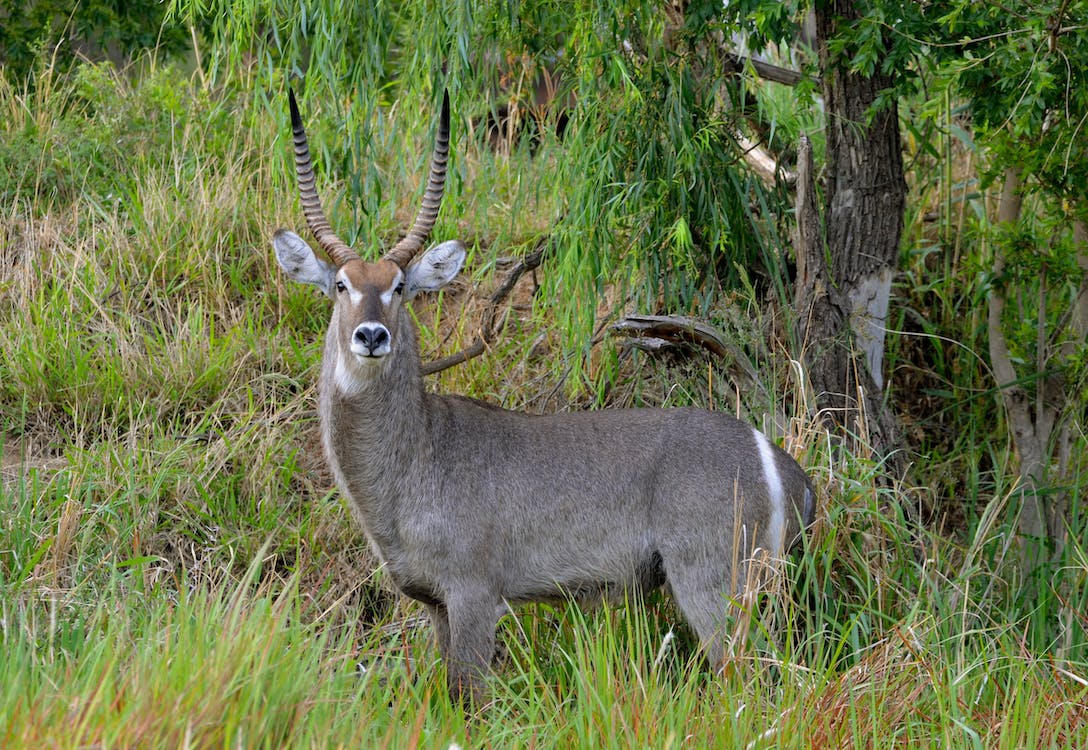The Blesbok, also known as Blesbuck or Damaliscus pygargus phillipsi, is an antelope species indigenous to Eswatini and South Africa. This species falls under the Bovidae family. Its closest relatives include Blue Duiker, Eland, Gerenuk, Bontebok, and Sitatunga. American naturalist Francis Harper first described this antelope species in 1939.
The Blesbok is considered as one of the gaudiest antelopes. It is the South African version of Sassaby. It once occurred in highveld grasslands across Africa, but they were hunted nearly to extinction during the mid-19th century. The species has been reintroduced to local farms, and now it is one of the most abundant antelopes in South Africa. As of 2017, the Blesbok’s population has been rising, estimating to be at least around 54,000, 69% of which are genetically pure. Around 17,000 individuals reside in protected shelters. Therefore, the International Union for Conservation of Nature (IUCN) Red List categorized them as Least Concern.
Its nine levels of scientific classification are as follows:
Kingdom: Animalia
Phylum: Chordata
Class: Mammalia
Order: Artiodactyla
Family: Bovidae
Subfamily: Alcelaphinae
Genus: Damaliscus
Species: D. pygargus
Subspecies: D. p. phillipsi
The physical characteristics of a Blesbok
Blesbok is medium-sized antelopes, but they weigh so much as 85kg. Its body length ranges from 14-160 cm, shoulder height is around 85-100 cm, while the tail length is between 30-45 cm. Its prominent feature is its white blaze on the face and a horizontal brown strip that divides the blaze on the upper part of its eyes. Its body color is brown with a lighter-colored saddle at the back. The shade goes lighter on the rump.
Its legs are brown with a white patch behind the upper part of its front legs. The lower legs are whitish. Both male and female Blesboks have ring-tipped horns. Female horns tend to be slenderer.
The upper back and neck of a Blesbok are brown. The color darkens from its lower back down to the flanks and the buttocks. This antelope species can be easily differentiated from others because of its prominent white face and forehead.
Its co-subspecies, the Bontebok, usually interbreeds. The hybrid between two species is called Bontebles or Baster Blesboks.
The distribution and habitat of Blesboks
Blesbok occurs mainly in South Africa, though some can also be sighted in Eswatini. It is found in large wildlife parks and open grasslands with water. They occupy small areas of 2.5 to 6 acres in size.
Once considered as one of the most abundant antelope species living in the African plains, its historic range includes the Highveld north of the Vaal River towards the Free State to the Eastern Cape, the upper reaches of Tugela River to Lesotho, and the western region of the Maluti Mountains. Presently, most of their numbers are confined in the protected areas of South Africa.
The behavior of a Blesbok
Blesboks are considered diurnal grazers, meaning they spend the morning and afternoon grazing, resting during the midday until evening. They are gregarious mammals, forming groups of up to 25 individuals. Blesboks were previously nomadic—they form large herds and migrate among seasonal areas and pastures. In large herds, Blesboks were observed snorting and grunting, both of which are alarm signals. Male Blesboks defecate heaps of dung to mark its territory. They also display dominance by standing sideways to an intruder, digging soil using horns, foot-stomping, and head swinging. Occasionally, male Blesboks engage in a vicious fight that could be fatal.
The breeding season happens between February and April, peaking during the latter month. The gestation period happens in 8 months. After this, young are born from August to December. A female Blesbok usually gives birth to a single young, which can already stand and walk on its own 2 hours after its birth. Blesboks typically live up to 17 years.
Common predators of Blesboks
Like other antelopes, Blesboks are common prey to the wild’s vicious predators, including Lions, African Wild Dogs, Cheetahs, Spotted Hyenas, Leopards, and even humans, who hunt for Blesbok skin and meat. White Jackals and eagle species prey on calves. When being chased, Blesboks can maintain a speed of43 mph. Although they are not excellent jumpers, they are good at crawling under things that provide them defense.
The diet of a Blesbok
Blesboks are herbivores and grazers. They eat grasses, primarily red oat grass, species under the genera Eragrostis, and Chloromelas.
